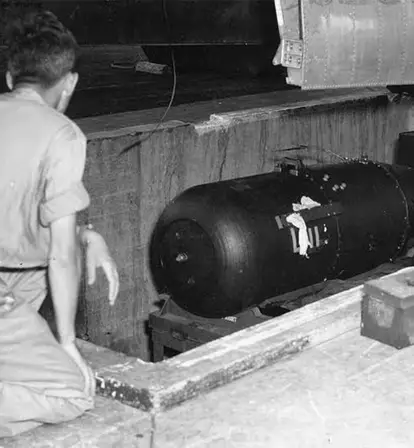"Little Boy" weighed as much as a car and exploded with the force of 15,000 tons of TNT over Hiroshima on August 6, 1945, killing 80,000 people almost instantly.
When Nazi Germany surrendered in May 1945, the only Axis power the Allies had left to defeat was the Japanese.
America decided to accomplish that goal by way of two atomic bombs, both of which killed tens of thousands of Japanese citizens in an instant.
This was the first time in human history that nuclear weapons were used in warfare. The first bomb, which was dropped over Hiroshima, was codenamed “Little Boy” as it was the smaller of the two weapons. But it wrought far worse devastation. Up to 80,000 people were killed almost instantly as a direct result of Little Boy’s blast. Of these, it is believed that only 20,000 were members of the Imperial Japanese Army.
The Manhattan Project And The Precedent For An Atomic Bomb

Wikimedia Commons Little Boy, the bomb that destroyed Hiroshima, Japan, in August 1945.
Even though the United States was late to enter World War II, it was the one to introduce a weapon that could end it. America officially entered the war following Japan’s attack on Pearl Harbor on Dec. 7, 1941, but two years earlier, it had already begun the covert Manhattan Project, which was a $2 billion program tasked with developing the atomic bomb. These bombs would be Little Boy and “Fat Man,” which were later dropped over Hiroshima and Nagasaki, respectively.
While most of the work on this project was done in a secret lab in Los Alamos, New Mexico, additional facilities were established in Oak Ridge, Tennessee; Chicago; Washington state; and British Columbia.
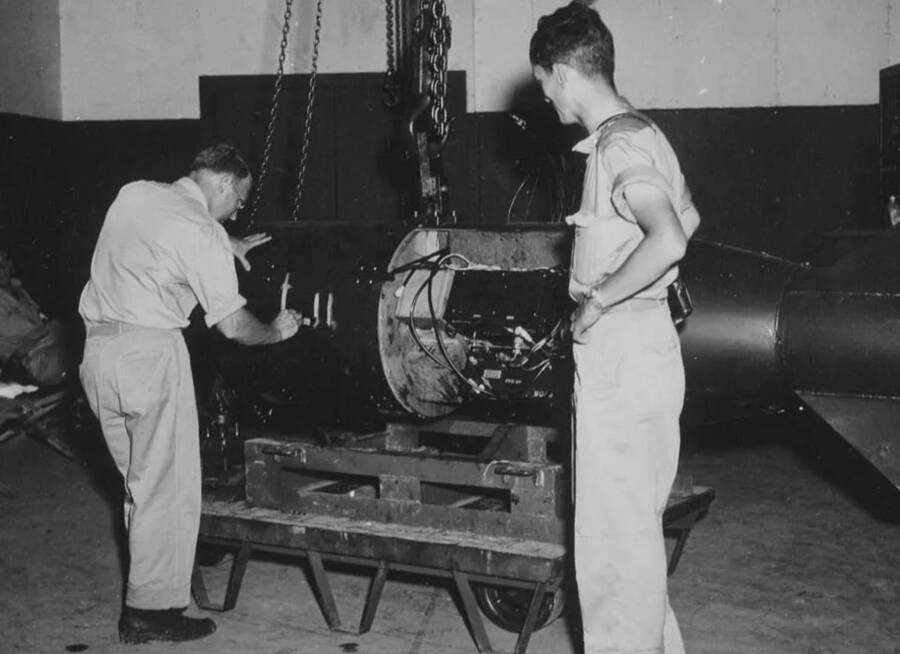
Public DomainCommander A. Francis Birch (left) assembles Little Boy as physicist Norman Ramsey watches.
The project was largely a response to the widely-held fear that scientists in Nazi Germany had already been hard at work on nuclear weapons technology, especially because two German scientists discovered nuclear fission in 1938, which made the generation of such atomic weapons possible.
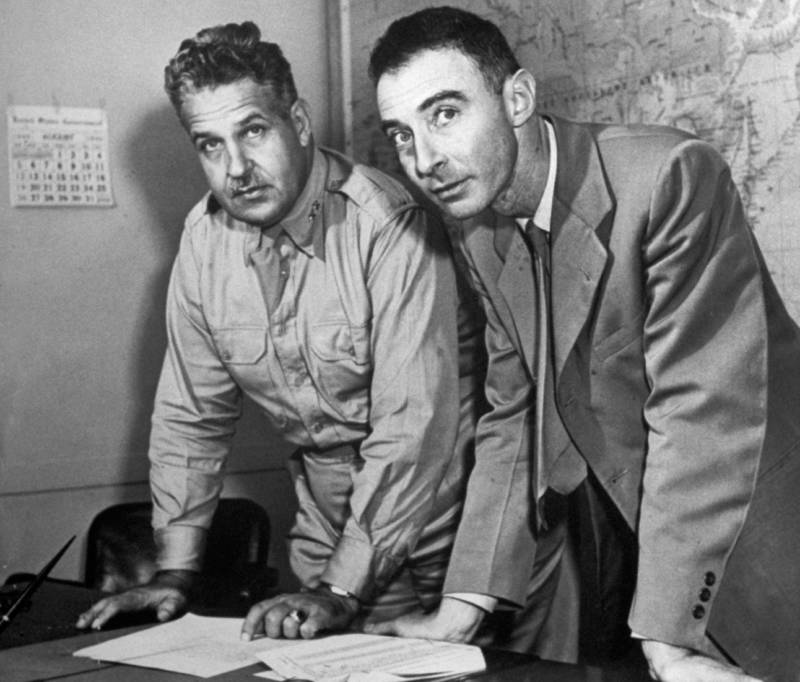
Wikimedia Commons Col. Groves and Robert Oppenheimer, the two heads of the Manhattan Project.
The research team at Los Alamos was headed by theoretical physicist Robert Oppenheimer, who has since been dubbed “the father of the atomic bomb.”
Oppenheimer’s team knew that enriched uranium-235 was the key to creating the reactions necessary to construct a functional nuclear bomb. How, exactly, they would develop such an unprecedented weapon had yet to be determined.
But after finally detonating the first successful test bomb in July 1945, Oppenheimer chillingly quoted the Bhagavad Gita, “Now I am become Death, the destroyer of worlds.”
Developing Little Boy
Researchers on the Manhattan Project finally settled on two different designs for the atomic bombs.
One was Little Boy, which operated not unlike a gun but on a nuclear scale. Little Boy would blow when a uranium projectile was fired through a gun barrel at another uranium target. The projectile was designed to fit perfectly over the target. Once the two collided, they formed an unstable element and the nuclear reactions that followed resulted in an atomic explosion.
Fat Man, on the other hand, was an implosion-type device that used plutonium instead of uranium. In the center of Fat Man was a plutonium core surrounded by several thousand pounds of high-explosives that directed its force inwards, thereby crushing the plutonium core until it became unstable and imploded.

U.S. Air ForceThe Boeing B-29 Superfortress, Enola Gay, that carried Little Boy.
Once assembled, “Little Boy” weighed 9,700 pounds, approximately 140 of which was uranium fuel. The bomb was 10 feet long and 28 inches in diameter and its explosive force was the equivalent of 15,000 tons of TNT.
Little Boy was never tested before it was dropped on Hiroshima but the scientists behind it were confident that it would work. Thus, in July 1945, trains transported Little Boy’s components from Los Alamos, New Mexico, to San Francisco.
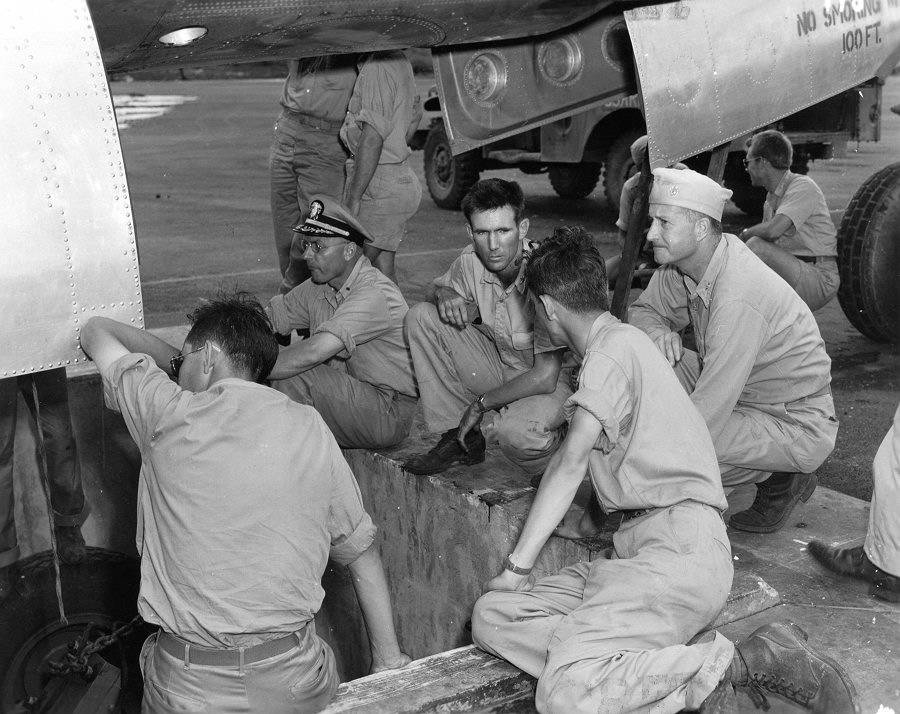
Wikimedia Commons The crew on Tinian Island loads Little Boy into the Enola Gay, August of 1945. Capt. William Parsons is wearing glasses and in the formal Navy hat.
From there, the USS Indianapolis, a heavy U.S. Naval cruiser, transported the parts to Tinian Island south of Japan. The target piece and the projectile were transported separately.
In total, Little Boy was carried in three separate caravans. After a 10-day journey at high speed covering 5,000 miles, the USS Indianapolis arrived. It was July 26, 1945.
The world was 11 days away from the first use of an atomic bomb in warfare.
Detonation Over Hiroshima
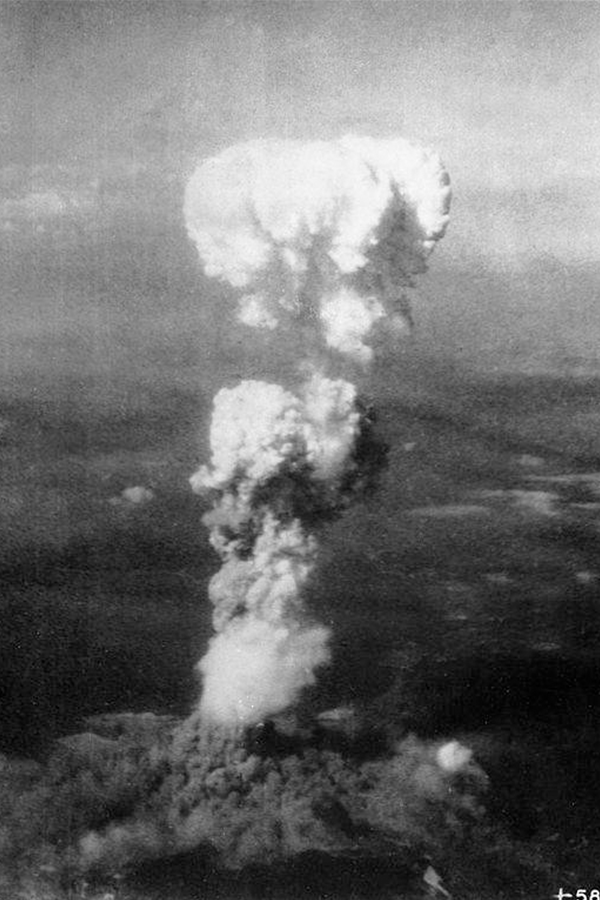
National ArchivesThe cloud caused by the blast of Little Boy.
Once all the components of the two atomic bombs were safely secured on Tinian Island, U.S. Navy Captain William S. Parsons was tasked with assembling and loading Little Boy onto a rigorously modified B-29 bomber piloted by Colonel Paul Tibbets.
But Parsons was fearful that Little Boy may accidentally detonate in the case of a plane crash during take off. He told Tibbets he would assemble most of the bomb before take off, but then Tibbets and his crew would have to complete it while en route to Hiroshima.
At 8:15 a.m. local time on Aug. 6, 1945, Tibbets arrived at the drop zone.

Getty ImagesU.S. surveys estimated that 4.7 square miles of the city were destroyed.
Alongside the overwhelming amount of Japanese citizens who had no idea what would befall them seconds later was most of the crew of the Enola Gay. They had been told they’d been given a weapon that could end the war, but they did not know how real that was until they deployed it.
After falling for 44 seconds, the bomb detonated at 1,900 feet above the city.
The Destruction Wrought By Little Boy
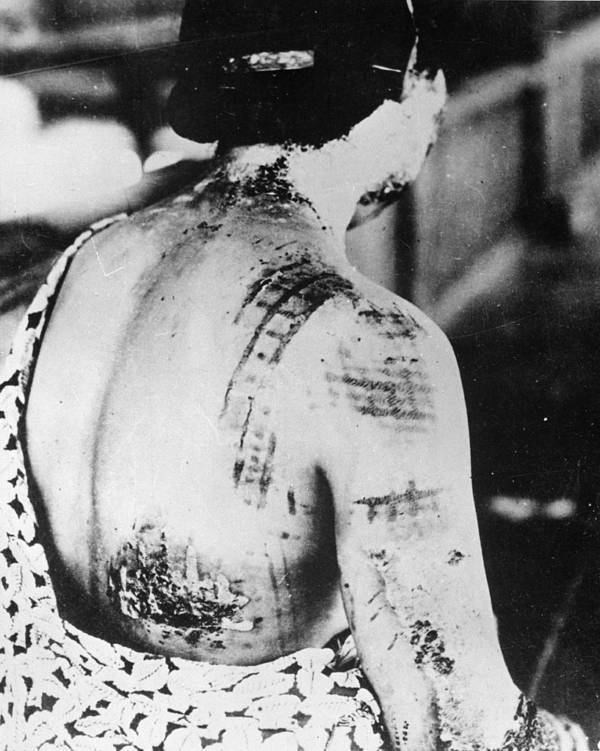
Getty ImagesThis woman was left with burn marks on her skin in the pattern of the kimono she had been wearing.
At the moment Little Boy detonated with the force of the force of 15,000 tons of TNT, witnesses would have seen only a blinding flash of light as it smashed into the flatlands below. What followed this was a fireball that ran at 10,000 degrees Fahrenheit.
The immediate surroundings burst into flames and almost everything within a one mile-radius of Little Boy’s impact was utterly cremated, except for a few earthquake-resistant concrete buildings, but even those were gutted. Fires raged roughly two miles from the site of impact.
One victim, who was seated 850 feet away from the center of Little Boy’s impact, was reduced to only a shadow as the stone steps around them were bleached by the tremendous heat.
Approximately 80,000 people were killed and another 35,000 injured in the immediate blast. At least another 60,000 would be dead by the end of the year from the effects of radioactive fallout.
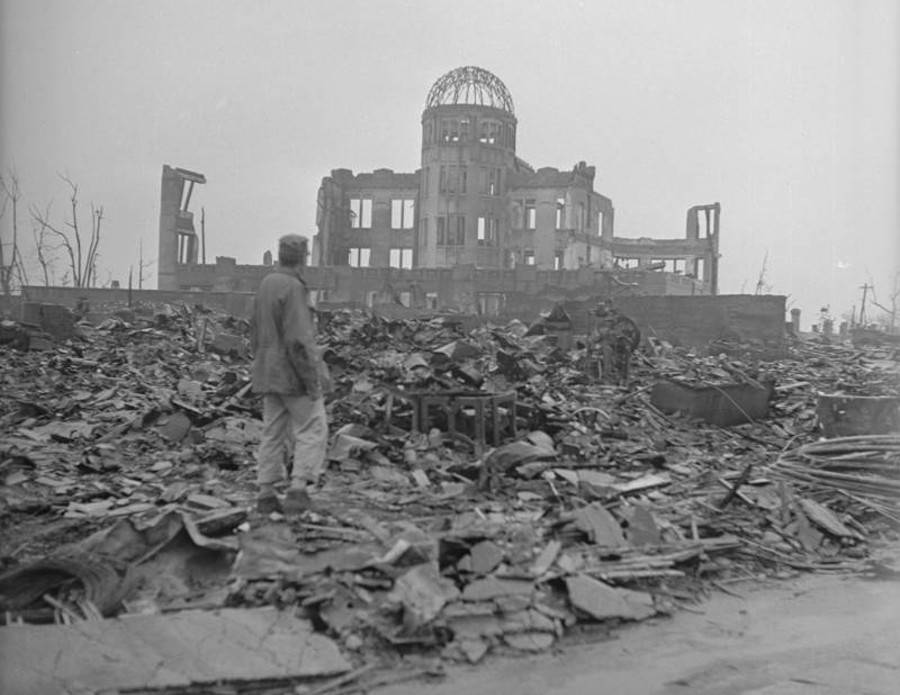
Bernard Hoffman/The LIFE Picture Collection/Getty Images A man surveys the ruins of Hiroshima Prefectural Industrial Promotion Hall. This building became the city’s peace memorial after renovation.
Perhaps most terrifying was the fact that Little Boy was considered an inefficient weapon because it only used 1.38 percent of its fissionable materials.
Three days after Hiroshima was reduced to an inferno, a minimum of 39,000 people in Nagasaki experienced the same fate as Fat Man detonated over their home.
It was the first and last time nuclear weapons were used in the history of humankind. As one of the crew members of the Enola Gay mused, “I hope there will never be another. I pray that we have learned a lesson for all time. But I’m not sure that we have.”
Next, check out these photos of the aftermath of Hiroshima. Then, read about the war crimes committed by the Japanese during World War II.
